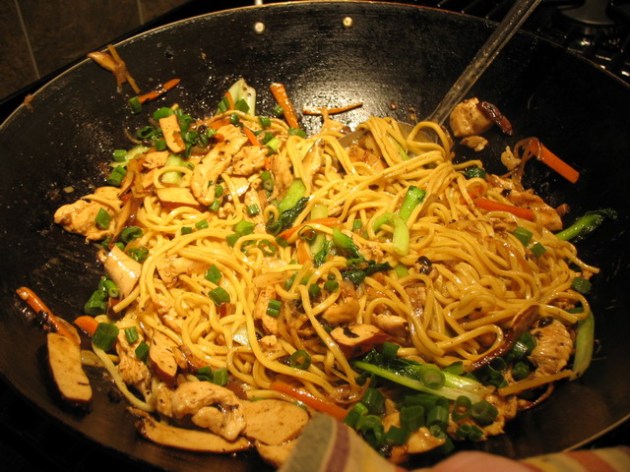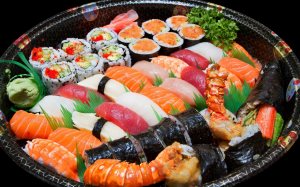Pho With Steak
Pho is by far one of Vietnam’s most popular dishes, and this particular dish has traveled all the way across the globe to the United States. We see Pho restaurants all throughout the city of Denver and in almost every other state. Pho is delicious in my opinion it’s served hot with plenty of greens that compliment the broth and noodles perfectly. “Pho is a noodle dish served with a variety of meats and vegetables. The key ingredient to making delicious Pho is in fact the broth.” (Huynh)” The broth has to be made with careful care and must be clear the clearer the broth the better.” (Huynh) Pho has reached out to all types of people and now almost any person you ask will have some knowledge as to what Pho is. Most people love how flavorful yet simple this dish is, it literally consists of noodles, broth, some type of meat if you prefer, and some vegetables. Besides the fact of it being easy to eat its also relatively cheap. A Large bowl of Pho at most restaurants will range about seven dollars. This is enough to feed a young growing teen such as myself. This is actually a better deal than fast food in my opinion. Not to mention it is also healthier. These are some of the reasons that led to Pho being so popular and this popularity has contributed to the spread of local restaurant popping up all over states.
Pho has been described as an art.(Corlou) “To some chefs Pho is a very time consuming dish although the results is worth every second.” (Corlou) Pho takes anywhere from 7-8 hours of cooking to days. The broth is what makes or breaks a good bowl of Pho from a great bowl of Pho. Each chef has their own particular way of making such a complex dish but overall the results yield a great sweet broth that pairs with steak, meat balls, or even tofu for vegetarians. However it all starts with beef bones usually the knuckles which is suppose to give the best/rich flavor to the soup. Pho has come a long way since it first originated in small villages where a bowl of Pho would be served to locals outside in a home owned restaurant.(Corlou) Local chefs would start to prepare this delicate cuisine the night before and have it ready for customers in the morning to breakfast. Back in these times the bowl of Pho would cost about 15 cents in U.S Dollars. And as outsiders came to visit and explore the foods that Asia had to offer they began to show a lot of interest in Pho. (Corlou) This exposure to the outside world was the first step in spreading Pho all across the world. Pho has since become the most popular Vietnamese dish.
Pho consists of many ingredients primarily in the stock/broth. Multiple spices, herbs, and other ingredients are used to ensure a tasteful delight. Served with Pho are usually greens which usually consists of bean sprouts, basil, limes, and jalapenos. These will add the final touches to the already delicious meal. I believe Pho is a meal because it is not only filling but contains a good source of protein and is low in fat. The greens are also really nutritious and good for ones immune system and health. Pho has to be one of my most favorite noodle dish. I would highly recommend anyone to try it if you get the chance. And please do not give it one try at least two because not all Pho restaurants are created equally.
Recipe:
- Ingredients:
- Pho Noodles
- Beef Bones
- Rare thinly sliced steak
- Shallots
- Ginger
- Star anise
- cinnamon stick
- lime
- spring onions
- fish suace
- fresh chili
- ground pepper
- herbs (sweet mint)
- bean sprouts
- jalapenos
For the actual preparation i will refer you to this website where there is a video that will show and explain to you step by step how to make Pho if you so desire to attempt to make it at home.http://www.inspiredtaste.net/4307/vietnamese-soup-pho/
This link will provide you with additional information on the specific ingredients along with tips and advice for when preparing to make Pho at home.
Sources:
Adam. “Vietnamese Beef Noodle Soup – Pho Recipe Video.” Inspired Taste Easy Recipes for Home Cooks RSS. Inspired Taste, 5 Aug. 2010. Web. 21 Oct. 2013.
Huynh, Nhung, Mrs. “Pho Break Down.” Personal Interview. 20 Oct. 2013.
Corlou, Didier. “Viet World Kitchen.” ‘Viet World Kitchen’ Viet World Kitchen, 31 Oct. 2008. Web. 24 Oct. 2013.



